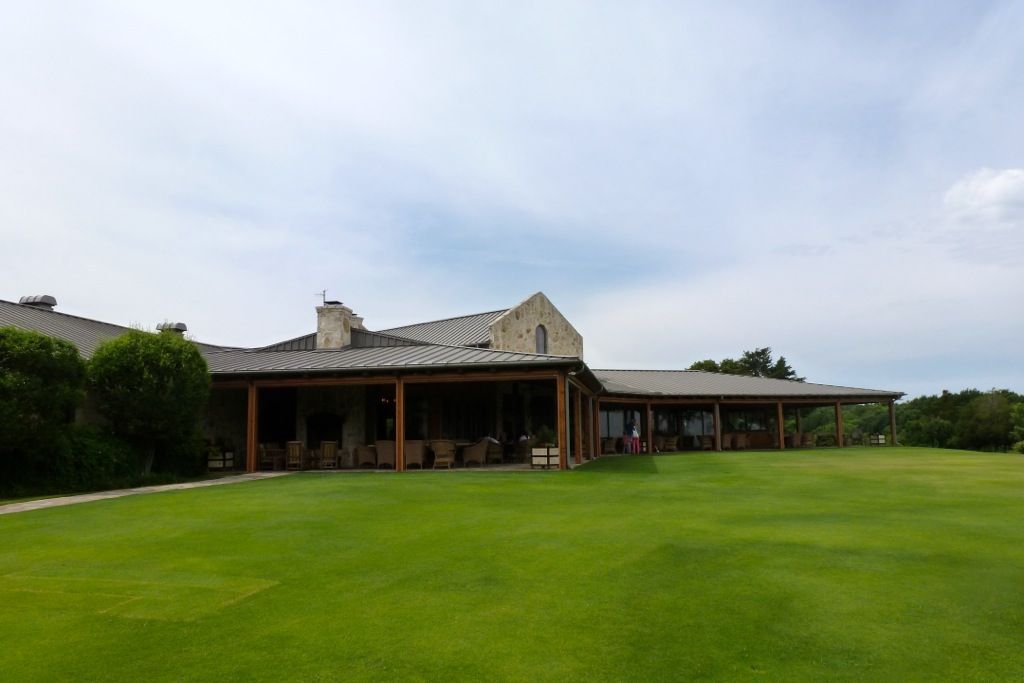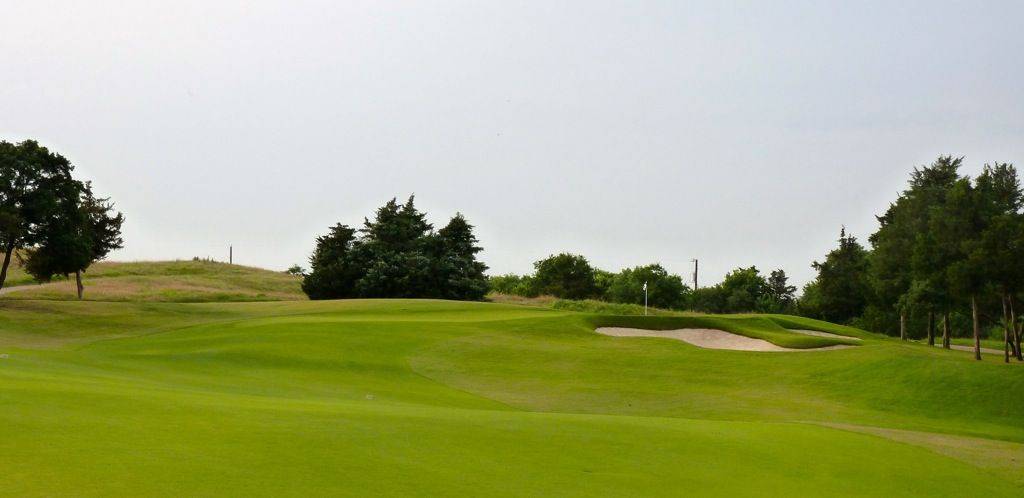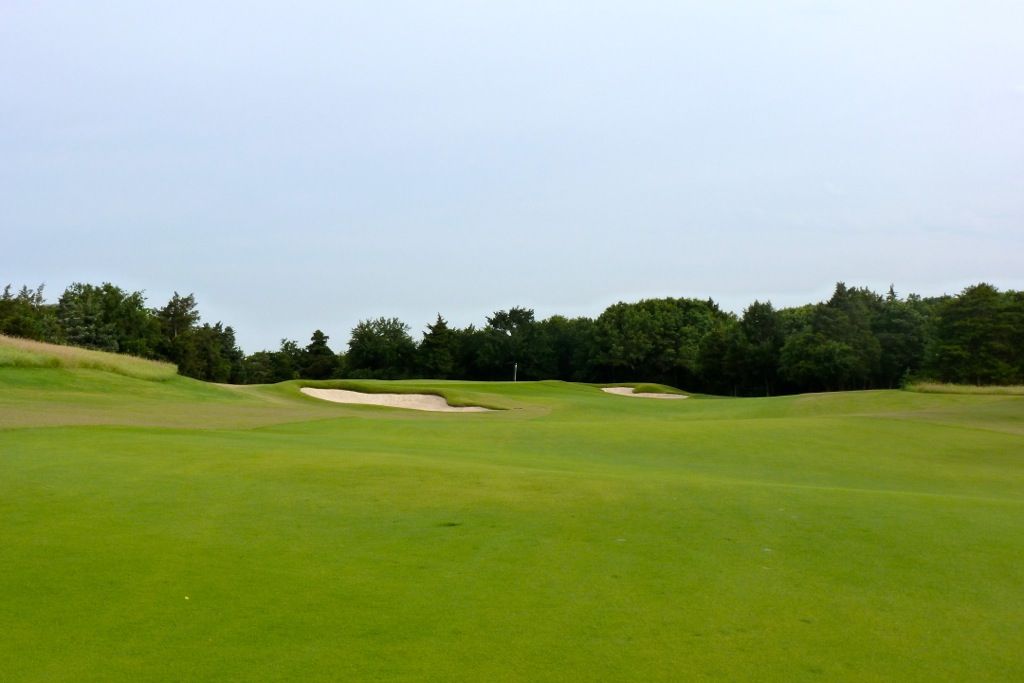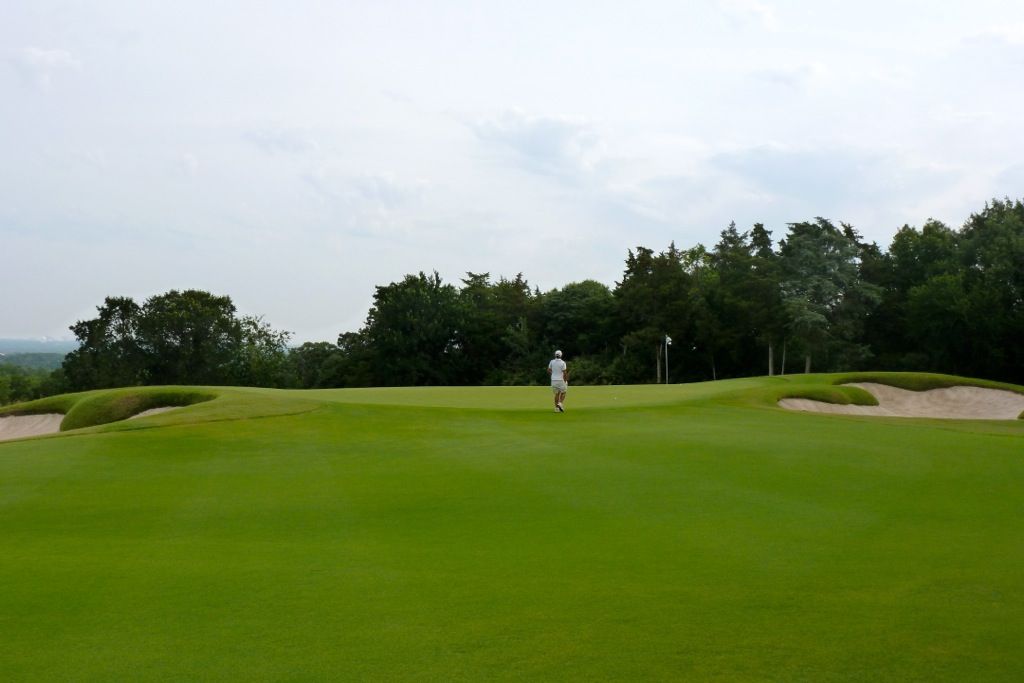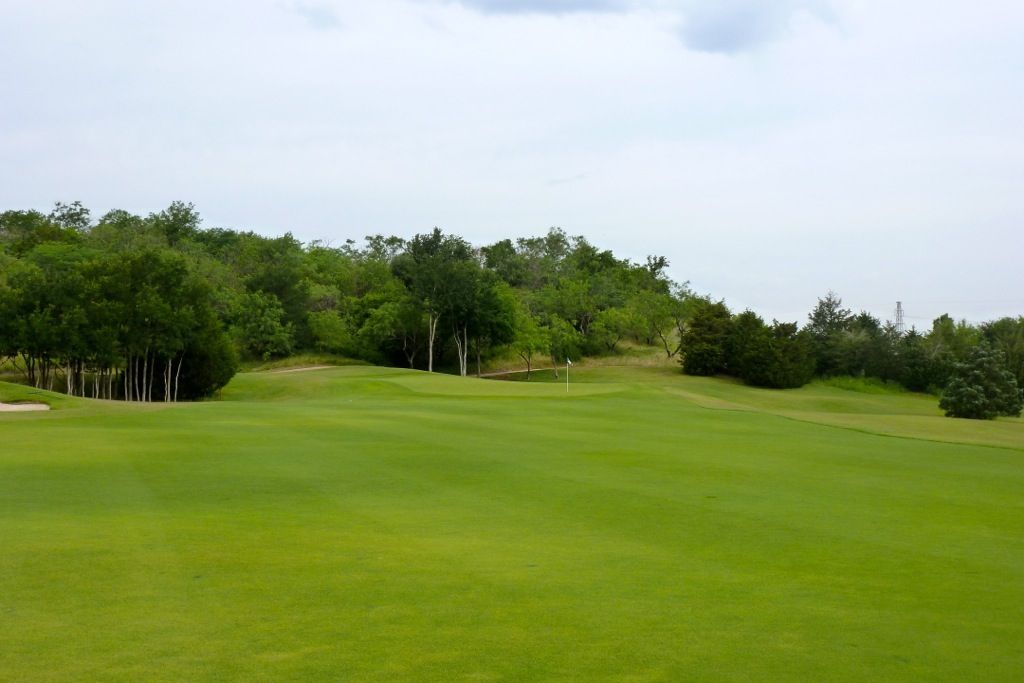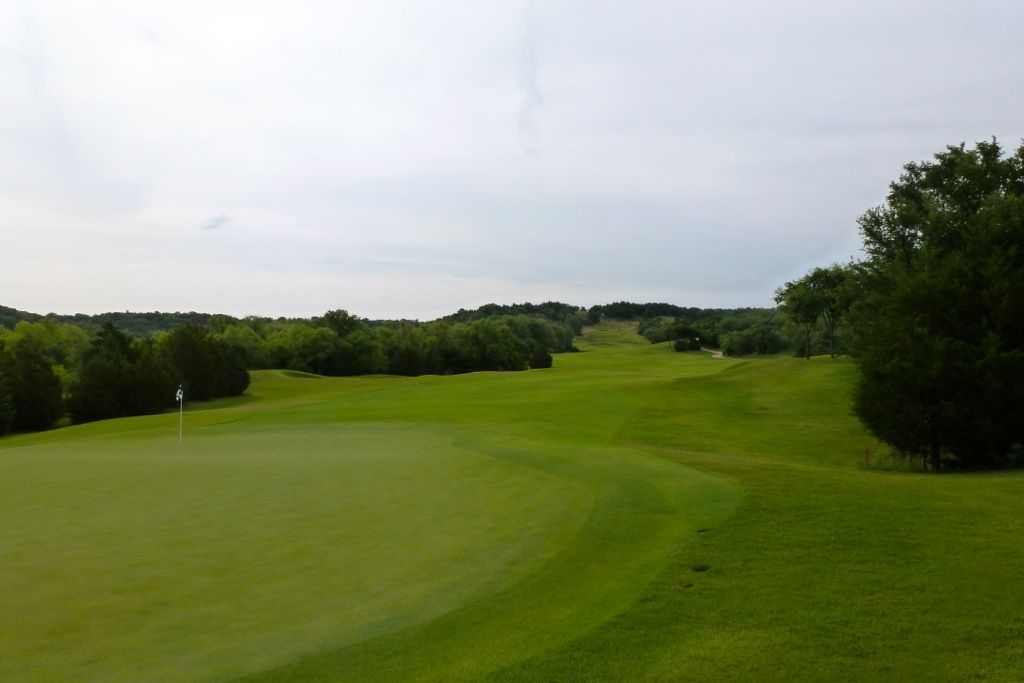Uxbridge, Ontario, Canada
Architect: Greg Norman (2007)
7,479 Yards, Par-72
Rating/Slope: 75.6/139
My Quick Review: Despite a complete lack of restraint and a poor use of the property's natural features, Wyndance is one of Ontario's 50 best.
Wyndance Golf Club is the only Norman design in Canada and opened to considerable fanfare in 2007. Since then the course has been recognized by Score Golf Magazine as the 73rd best golf course in Canada (http://scoregolf.com/rankings/top100/top-100-golf-courses-in-canada-2012). I think Score has Wyndance rated about right; I place it 35th in Ontario (http://onegolferstravels.blogspot.ca/2012/07/my-ontario-top-50-golf-courses.html).
Much of the golf course is routed around an old gravel pit site, though only a handful of holes interact with the quarry and arguably none of them in an interesting way.
Fairway grass is everywhere at Wyndance, a major plus on a course with many flaws. Run-offs around the green, combined with the firm conditions that are the norm at Wyndance, mean that recovery shots around the green are interesting and difficult.
Norman's misuse of bunkers is predictable and uninteresting. A complete lack of restraint almost ruins what should be a very good golf course. Enjoy the photos.
The course stretches to near 7,500 yards from the Shark tees, but this photo tour will be from the 6,632 yard blue tees.
Scorecard Information and Routing from http://wyndance.clublink.ca/Default.aspx?p=DynamicModule&pageid=325382&ssid=219668&vnf=1

The long par-5 1st is a perfect microcosm for the golf course, flaws and all. The 1st fairway has plenty of width, though poorly placed bunkers are entirely penal in nature and there is no such thing as a preferred line off the tee. The approach shows Norman's lack of restraint as the green is guarded on one side by water, on another by a deep nest of bunkers, and long and left by a massive and intimidating run-off.


The second hole is one that has been debated before on Golf Club Atlas, though I don't think a consensus was reached. A longer forced-carry guards the less than ideal line. A deep centreline bunker must be avoided to leave a short-iron into this plateau green protected short by deep bunkers and long/left by another huge run-off.

Approach from left

The 3rd is a decent though forgettable par-3 with a massive green and some broad internal contours

The anti-strategic features continue at the 4th as this diagonal forced-carry protects the less than ideal line.

Playing away from the forced carry leaves the preferred line into this wildly shaped and contoured triple-tiered green

The long par-4 5th is nearly a very good hole, though the anti-strategic bunkering on the right side of the fairway frustrates me. The golfer must carefully judge the carry over the waste area on the left as the approach from the left is considerably simpler.

Approaching from the right (bailed-out tee shot) requires precision to avoid this deep road hole-esque bunker and to find a green that is at an angle.

The 6th is another long par-4 and plays in the same direction as the 5th and is completely mis-uses the centreline hazard. The fairway left of the trees is so small that no golfer will purposely play there and the bunkers benched into the hill on the right are an anti-strategic, eye-candyish mess.
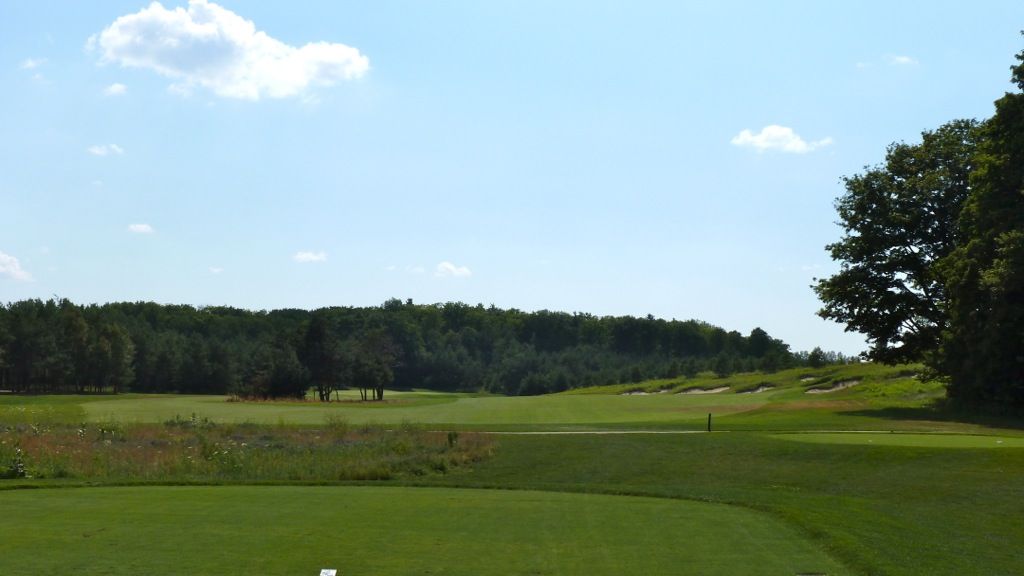
At the 7th Norman again misuses the quarry. Rather than uses the natural feature on the left in a meaningful way, it is entirely penal in nature.


The long par-3 8th is a very pretty golf hole and one on which missing anywhere is not an option (though those bunkers on the left may save more shots than they penalize).


The 9th is one of the best holes on the golf course. Strategic(!!) bunkering on the left must be flirted with to leave a reasonable angle of approach as a reverse-cambre fairway will kick many tee shots too far to the right.

The 9th green is angled, contoured and extremely narrow. A bunker of massive scale protects the right side of the green, making the green feel smaller than it is, and pushing golfers to the left where acres of fairway green lay (and from where the green tilts away).

The back-nine starts with the least interesting stretch of holes on the course. The 10th is a straightaway par-4 of little interest. The approach.

The 11th is an ill-conceived short par-4. In theory, the golfer has the option of 1) playing short of the centre-line bunker; 2) playing left of the centreline bunker to the strip of fairway that extends to near even with the green; 3) playing over the bunker on the right to an upper portion of fairway. Unfortunately, only option 1 is practical and the only option I've ever seen anyone take.

Most golfers will be left with this approach. A pretty cool skyline green, though a rather dull hole.

The 12th hole plays alongside the quarry and is a very intimidating par-3. This view from the Shark tees is butt-puckering.

Bailing out left is an option though the recovery from fairway cut is not simple.

Like the 9th, the 13th lacks the drama of the quarry holes but is of strategic interest.

The 14th plays into the quarry and is a reachable par-5 around a lake. Bunkering on the tee shot is RTJ-esque.

Golfers considering reaching the green in two must be committed to their shot as bailing out to the right will leave a very difficult recovery from a series of bunkers.

14th green from behind:

The 15th plays in the opposite direction to the 14th and often plays into the wind. This very long par-4 will play closer to a par-5 for many. The 15th green is one of only a handful that requires an aerial approach; a bizarre choice given the length of the hole.
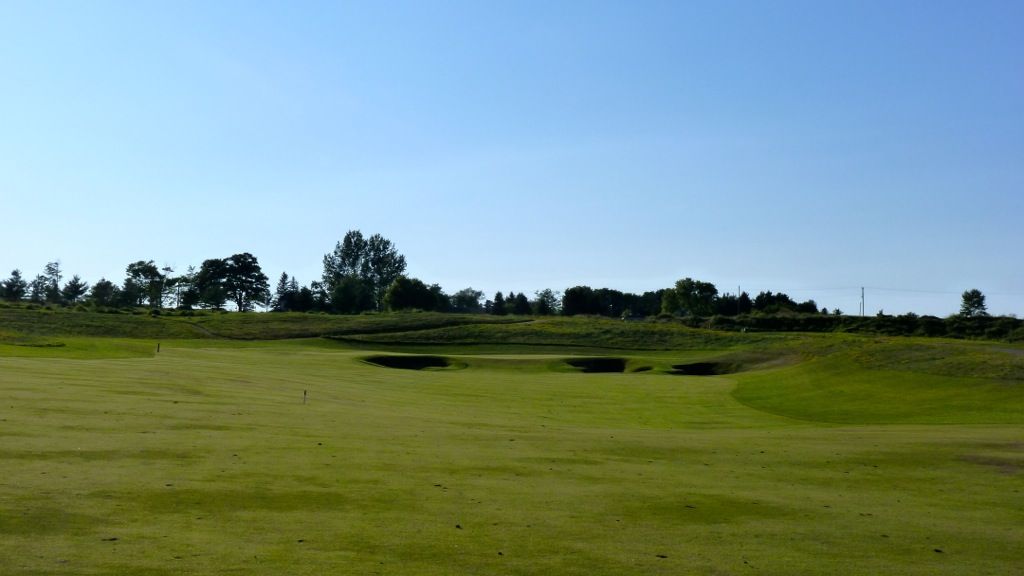
The 16th is another dramatic quarry hole, requiring two forced carries over out-of-bounds. Again, the use of the quarry while thrilling is uninteresting in the long-run.



Another difficult par-3 at the 17th:

The quarry must be played over one last time at the 18th. Anti-strategic bunkering all the way down the right side of the fairway is predictable.
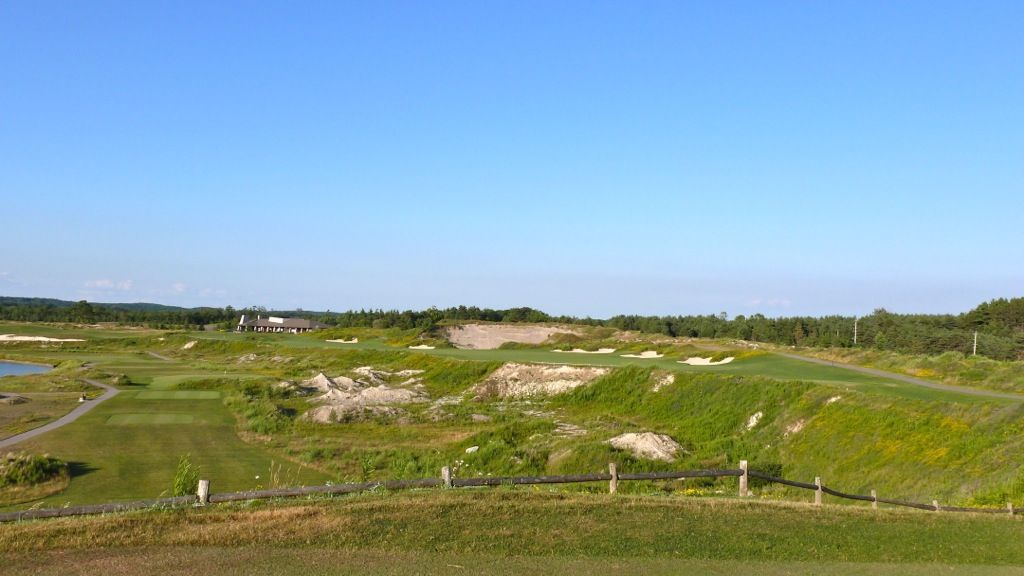
This massive bunker/blowout/whatever! right of the fairway is amazing and would easily dwarf the blowout left of the 4th at Sand Hills. The gentleman in the picture helps to give a sense of scale.

The 18th from behind:




